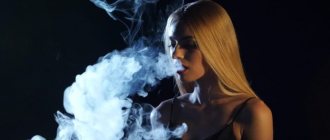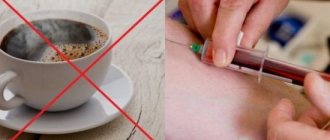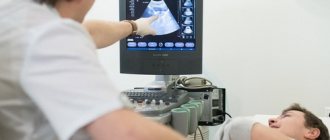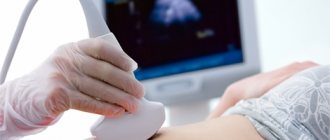Modern medicine has many diagnostic methods. Some procedures are preceded by careful preparation, and some are performed on the day of treatment. Fluorography is the simplest examination with a minimum set of rules that should be followed. Many people are interested in whether it is possible to smoke before a planned fluorography? Let's look at the risks of smoking on the day of a chest X-ray scan, how this will affect the results, and what experts think about this.
How smoking affects the lungs
It is well known that smoking has a detrimental effect on the entire body, and especially on the lungs. Nicotine and tar, which smokers inhale with each cigarette, settle on the mucous membrane of the respiratory system and then leave the body for quite a long time, leaving behind thousands of harmful substances. The lungs of a smoker can be compared to those of a person who lives next to an industrial area. Smoking addiction can lead to diseases such as lung cancer. In addition, every cigarette contains carcinogenic substances that provoke cellular mutations and stimulate cancer processes in various systems of the human body.
Is it possible to smoke before fluorography?
Many smokers wonder whether it is possible to smoke before fluorography and whether this will affect the result of the study. A smoke break before the procedure will not change the doctor’s conclusion, since the image reflects only those changes in the lungs that are already firmly formed.
Important! The fluorograph is not able to detect the remains of cigarette smoke in the bronchi, since it is not radiopaque. Therefore, a smoker can afford to smoke before the study.
Where and how to check your lungs
You can check your lungs using one of the x-ray methods: x-ray, fluorography, computed tomography. Fluorography is the most accessible and safe method for assessing the condition of the bronchopulmonary system. This procedure is mandatory for every adult. It is carried out in order to detect serious pulmonary diseases: tuberculosis, cancer, bronchitis (chronic and obstructive), cysts, abscesses, emphysema, fibrous formations, as well as indirect signs of problems in the heart (reduction of the lumen between the lungs).
An X-ray of the lungs of a moderate smoker is not much different from an X-ray of the lungs of an ordinary person, provided there are no pathologies.
FLG (fluorography) is an x-ray examination. Its results are presented in the form of a small picture of the internal organs. The method is based on the fact that different tissues absorb Ro-rays differently.
There are two types of this procedure:
- classic (film);
- digital.
In the digital method, instead of film material, a CCD matrix and technology for layer-by-layer examination of the chest with radiation are used. It takes longer, but provides more detailed information and minimizes the harm caused to the human body.
The fluorography image is:
- small-frame (from 2.4×2.4 cm to 3.5×3.5 cm);
- large-frame (from 7×7 cm to 10×10 cm).
When it is necessary to examine a specific pathology in detail, a large-frame image is taken.
There are mobile fluorographs, which makes the method in question even more convenient. This procedure can be carried out anywhere. A specially equipped car with such a device can move around the city.
FLG is also used to search for other serious diseases.
Indications for examination

Fluorography must be performed annually as a preventative measure. An examination is necessary if there is a suspicion of pathologies that can be identified.
In addition, fluorography is necessary when applying for a job, chest pain, if close relatives have had cancer, or the patient himself is a long-time smoker.
An examination is also necessary if a person has been in contact with a patient with tuberculosis.
What the lungs of a smoker and a non-smoker look like on FLG
A fluorogram is a picture of the lungs, heart and surrounding tissues, which has a heterogeneous appearance. This directly comes from the principle of conducting any x-ray examination, which consists in the uneven absorption of x-ray radiation by organs. If a person’s lung tissue is in normal condition, then on the film (or matrix) it will look smooth. If an inflammatory process occurs in it, the picture will contain darkening of varying intensity, and areas of increased airiness, on the contrary, will appear lightened.
Thus, an increase in the pulmonary pattern indicates the development of pathologies such as bronchitis, pneumonia, tumor, and cardiovascular failure. The presence of fibrous tissue indicates a history of severe infectious disease or surgery in the recent past. But stringy roots are a sign not only of an acute inflammatory process or a chronic disease, but also evidence of an addiction to smoking.
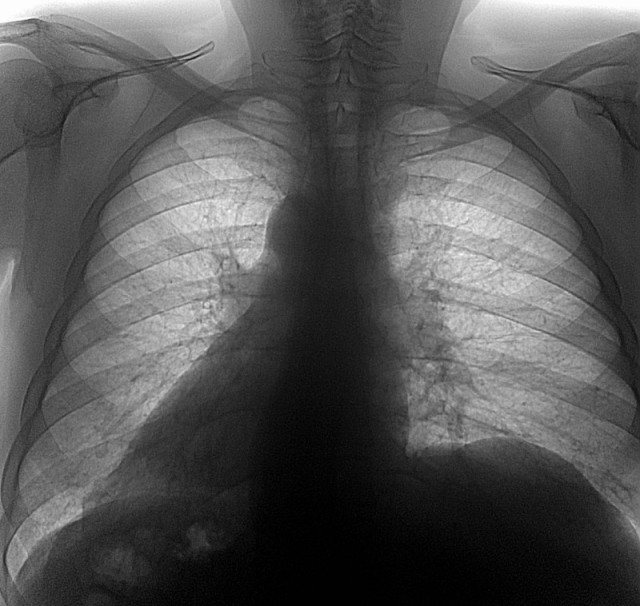
Usually, fluorography of a smoker looks like a regular photo without pathologies. In avid smokers, changes in the lungs may be noticeable, which is determined by the color on the photographic film.
A doctor cannot say with certainty that a person smokes based on an image. The darkening that is visible on a fluorogram has many other reasons for its appearance. Therefore, just by looking at the picture, it is impossible to unambiguously determine the presence of an addiction.
Smoking can make the situation worse. Air pollution and many other factors already put strain on your lungs every day. If we add to this the influence of cigarettes, an extremely unfavorable picture can emerge.
Is it clear from fluorography that a person smokes?
Such a conclusion can be drawn, but only indirectly. There can be no absolute certainty about this. Whether fluorography will show smoking or not largely depends on the length of service.
Often, with prolonged abuse, the harm from cigarettes reaches its peak and leads to serious illness. Then such changes will definitely be visible on the fluorogram. But no doctor can prove that the device shows a negative result precisely because of addiction to cigarettes.
Is it possible to smoke before fluorography?
There is a category of patients for whom the burning question is whether smoking is allowed before fluorography. Sometimes these are teenagers who are afraid that “their parents will find out.” Dependent smokers think about this in order to know whether it is possible to smoke a few minutes before screening. So, what is the effect of smoking immediately before the procedure?
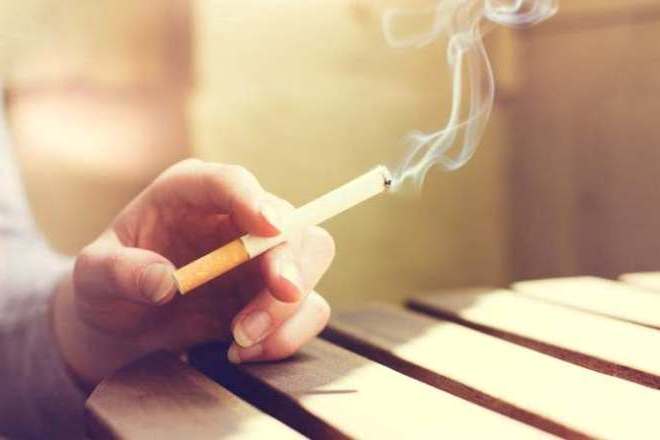
In fact, the results of the image do not change depending on the cigarette you smoke. The device does not detect smoke that remains in the lungs; it detects serious pathologies or changes in the body.
If the patient’s health is not in danger, not a single cigarette can affect the quality or reliability of the image. Therefore, it is impossible to designate a time during which you should not smoke before FLG.
Related question: is it possible to smoke hookah the day before or on the day of such a study? The effects of smoking using such a device on the body, and in particular on the lungs, have not been precisely proven. And perhaps this method is more harmful than regular cigarettes. But in this case the same rule applies. Hookah smoke is not visualized in the image. A doctor will be able to guess about hookah smoking only if they find specific pathologies.
Why do you need an x-ray for bronchitis and what does it show?
X-rays for bronchitis are prescribed to exclude other, more severe lung diseases. An accessible and simple method is highly informative and allows the doctor to clarify the expected diagnosis. When an X-ray diagnosis is needed, will the X-ray show signs of bronchitis? What does fluorography show? The reader will find answers to these and other questions in this article.
Why are x-rays prescribed?
Bronchitis is an inflammatory change in the lower parts of the respiratory tract - the bronchi. The causes most often are various infectious agents (viruses, fungi, bacteria, mycoplasma and chlamydia). With ARVI, inflammation of the bronchi, in most cases, is a bacterial complication.
Most often in the structure of pulmonary morbidity there is an acute process, which is characterized by a sudden onset and productive cough for no more than 3 weeks.
The dose of radioactive radiation that a patient receives as a result of an X-ray examination is 0.1-0.5 mSv. The permissible annual dose should not exceed 5 mSv.
Clinical signs of acute bronchial inflammation are represented by symptoms such as:
- increased body temperature;
- intoxication;
- The cough is initially dry (the first 2 days), then wet;
- mucopurulent discharge when coughing;
- wheezing, often bilateral, decreases after coughing;
- catarrhal phenomena.
As a rule, the diagnosis does not require laboratory and instrumental confirmation. But in some cases it is necessary to exclude other pathologies.
All these conditions are characterized by a prolonged cough syndrome. In this case, acute inflammation can be a layered disease with a previously undiagnosed pathology or its first sign.
0 out of 17 tasks completed
- 1
- 2
- 3
- 4
- 5
- 6
- 7
- 8
- 9
- 10
- 11
- 12
- 13
- 14
- 15
- 16
- 17
Information
This test will allow you to determine how susceptible you are to bronchitis.
You have already taken the test before. You can't start it again.
You must log in or register in order to begin the test.
You must complete the following tests to start this one:
You lead a healthy lifestyle and you are not at risk of bronchitis
You are a fairly active person who cares and thinks about your respiratory system and health in general, continue to play sports, lead a healthy lifestyle, and your body will delight you throughout your life, and no bronchitis will bother you
But do not forget to undergo examinations on time, maintain your immunity, this is very important, do not overcool, avoid severe physical and strong emotional overload
It's time to think about what you are doing wrong...
You are at risk, you should think about your lifestyle and start taking care of yourself. Physical education is required, or even better, start playing sports, choose the sport that you like most and turn it into a hobby (dancing, cycling, gym, or just try to walk more). Do not forget to treat colds and flu promptly, they can lead to complications in the lungs. Be sure to work on your immunity, strengthen yourself, and be in nature and fresh air as often as possible. Do not forget to undergo scheduled annual examinations; it is much easier to treat lung diseases in the initial stages than in advanced stages. Avoid emotional and physical overload; if possible, eliminate or minimize smoking or contact with smokers.
We also recommend that you familiarize yourself with the material on the prevention and treatment of bronchitis.
It's time to sound the alarm! In your case, the likelihood of getting bronchitis is huge!
You are completely irresponsible about your health, thereby destroying the functioning of your lungs and bronchi, have pity on them! If you want to live a long time, you need to radically change your entire attitude towards your body. First of all, get examined by specialists such as a therapist and a pulmonologist; you need to take radical measures, otherwise everything may end badly for you. Follow all the doctors’ recommendations, radically change your life, perhaps you should change your job or even your place of residence, completely eliminate smoking and alcohol from your life, and reduce contact with people who have such bad habits to a minimum, toughen up, strengthen your immunity as much as possible spend more time in the fresh air. Avoid emotional and physical overload. Completely eliminate all aggressive products from everyday use and replace them with natural, natural remedies. Do not forget to do wet cleaning and ventilation of the room at home.
We also recommend that you familiarize yourself with the material on the prevention and treatment of bronchitis.
How to clean a smoker's lungs
The lungs of a smoker, namely a heavy smoker, are difficult to restore. First of all, you need to immediately quit smoking, start leading a healthy lifestyle and try to use lung cleansing methods. This may take a long time. It is usually possible to fully rehabilitate within 10 months.
What can you do at home?
Breathing exercises will be very useful for former smokers. It promotes ventilation of the lungs and activates their work. There are entire systems of breathing exercises that were created by experienced doctors. The simplest exercise is “deep breathing”. It will help clear the tar deposits that remain in the lungs after smoking.
Physical exercises are great for cleaning the lungs. Sports activities keep the entire body in good shape, and it, in turn, is a complete system. Thus, the functioning of the lungs will be restored along with other parts of the body. Finally, physical activity provokes accelerated gas exchange, which also improves respiratory ventilation. For example, running in the fresh air can “restart” the lungs and, in combination with other actions, give a good result.

Experts recommend that people who have quit smoking regularly visit baths. This will help you forget about the bad habit and its consequences. The bath, due to its elevated temperature, provokes increased sweating and helps the body get rid of harmful substances. The brooms that are used when visiting bath complexes contain beneficial herbs. They promote even faster detoxification.
Nutrition
Recommended products for quitting smoking:
- pineapples. They contain bromelain, which perfectly cleanses the lungs, actively rejuvenates the body and forces it to get rid of harmful substances and toxins. Pineapples have a positive effect on the nervous system;
- garlic. It will help stop pathological processes caused by smoking. The active ingredient is allicin. It dissolves toxic mucus in the lungs and removes it from the body;
- apples. They contain a large amount of vitamins. It is they, in combination with other products, that will be able to consolidate the result of cleansing the body from the influence of tobacco smoke;
- water. For any unstable conditions, doctors advise drinking more fluids. This is what helps the body get rid of toxins;
- green tea. It includes the antioxidant catechin, which helps prevent cancer, and is also good at removing toxins introduced by tobacco smoke into the human body.

Medicines
There are a number of medications designed to cleanse the lungs of accumulated harmful agents. Usually these are mucolytics and expectorants. Among them: Ambroxol (Lazolvan), Acetylcysteine, Gedelix, Mucaltin and the like. They are available in a variety of forms - tablets, capsules, syrup or inhaler.
Types of fluorography
Today there are two main types of fluorography:
- Film , in which the image is only printed on the photograph;
- Digital is a more modern and convenient method. The research result can not only be printed, but also saved as a file on a computer or transmitted by e-mail. This method allows you to create an electronic database. In addition, when performing digital FLG of the lungs, the patient receives a lower dose of radiation exposure than during film FLG.
Description of the technique
This is a diagnostic method that began to be used in Russia back in the 30s. The essence of the technique is to obtain photographs of areas or organs. The method is based on the ability of X-rays to pass through tissues and be retained in them depending on their density.
The procedure is completed in a few minutes. The man undresses and stands at the machine. The doctor indicates what position to take. Then he goes into another room and directs the process from there. After turning on the device at the doctor’s signal, the person must hold his breath for a few seconds. Once the pictures are taken, the results are ready within 24 hours.
